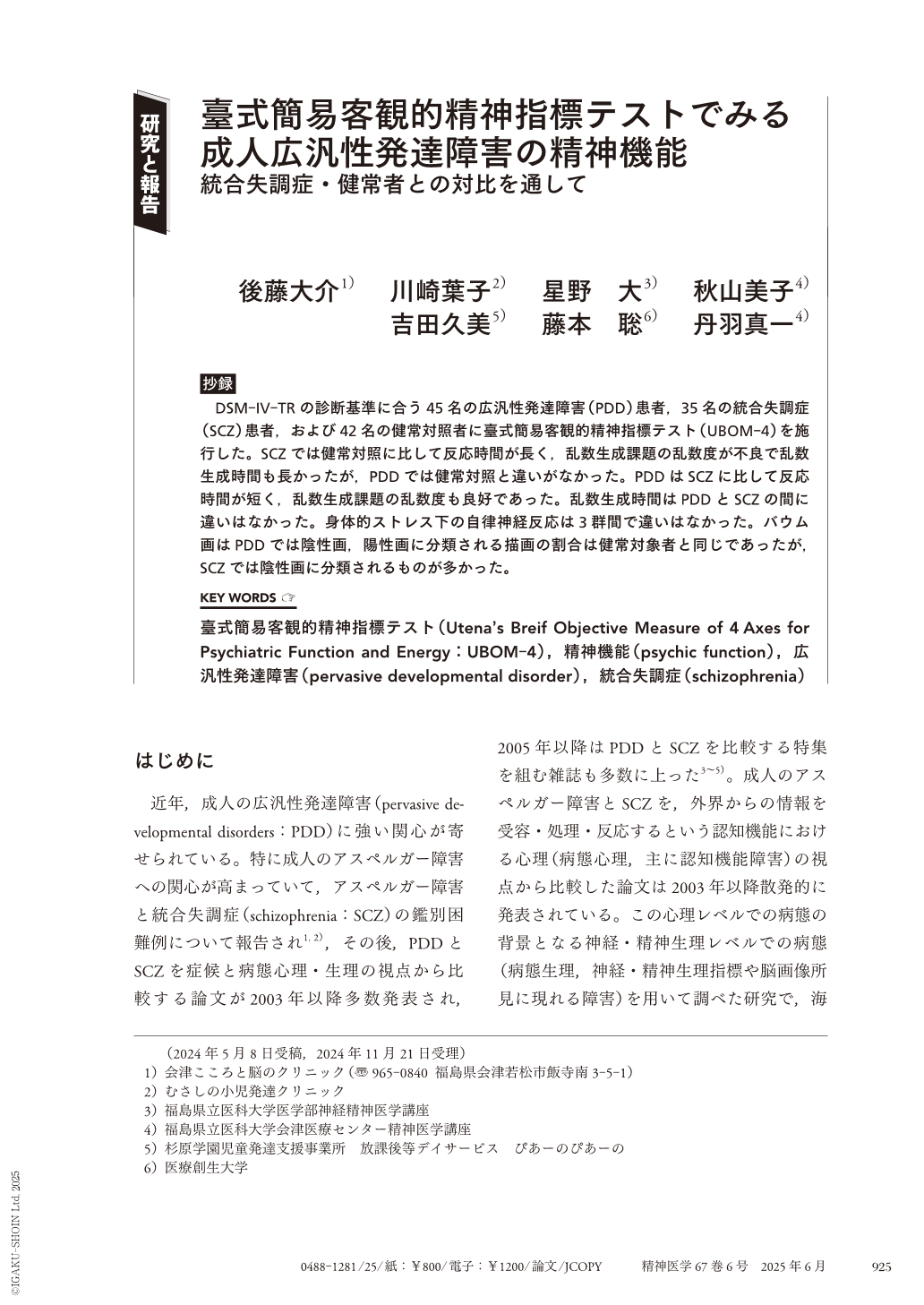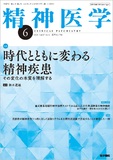Japanese
English
- 有料閲覧
- Abstract 文献概要
- 1ページ目 Look Inside
- 参考文献 Reference
抄録
DSM-Ⅳ-TRの診断基準に合う45名の広汎性発達障害(PDD)患者,35名の統合失調症(SCZ)患者,および42名の健常対照者に臺式簡易客観的精神指標テスト(UBOM-4)を施行した。SCZでは健常対照に比して反応時間が長く,乱数生成課題の乱数度が不良で乱数生成時間も長かったが,PDDでは健常対照と違いがなかった。PDDはSCZに比して反応時間が短く,乱数生成課題の乱数度も良好であった。乱数生成時間はPDDとSCZの間に違いはなかった。身体的ストレス下の自律神経反応は3群間で違いはなかった。バウム画はPDDでは陰性画,陽性画に分類される描画の割合は健常対象者と同じであったが,SCZでは陰性画に分類されるものが多かった。
Psychic function of pervasive developmental disorder(PDD)and schizophrenia(SCZ)were compared using Utena's Breif Objective Measure of 4Axes for Psychiatric Function and Energy(UBOM-4). UBOM-4 is a brief objective measure of psychic function and energy originally developed by Utena. Forty-five patients with PDD(DSM-Ⅳ-TR)and 35 patients with SCZ(DSM-Ⅳ-TR)as well as 42 healthy subjects(HLT)participated in the study. SCZ patients compared to HLT displayed longer reatction times as well as worse randomness and random nember gereration times in random number generation task. While, PDD demonstrated no differences in any indices. PDD as compared to SCZ patients exhibited better randomness. Response to physical stress of the autonomic nervous system, reaction times and random number generation time were not different between PDD and SCZ. Drawings in the Baum Test of SCZ were frequently classified as negative drawing. But PDD did not. PDD produced negative or positive drawings with almost same frequencies as the healthy subjects. Psychic dysfuntion as measured by UBOM-4 in Pervasive Developmental Disorder was thought rather limited when compared to SCZ.

Copyright © 2025, Igaku-Shoin Ltd. All rights reserved.


